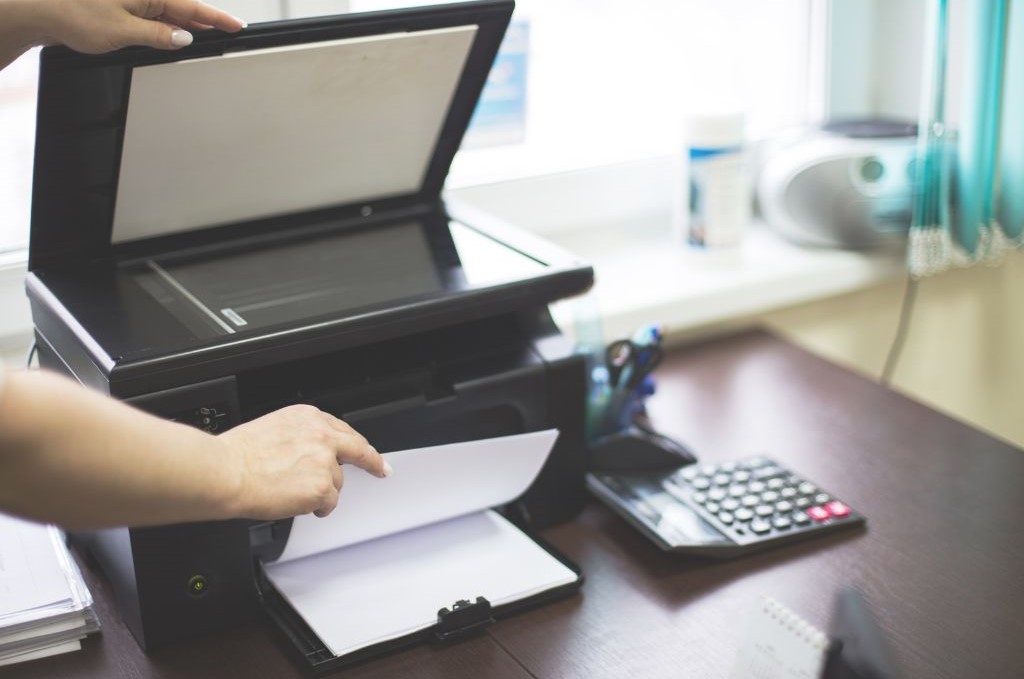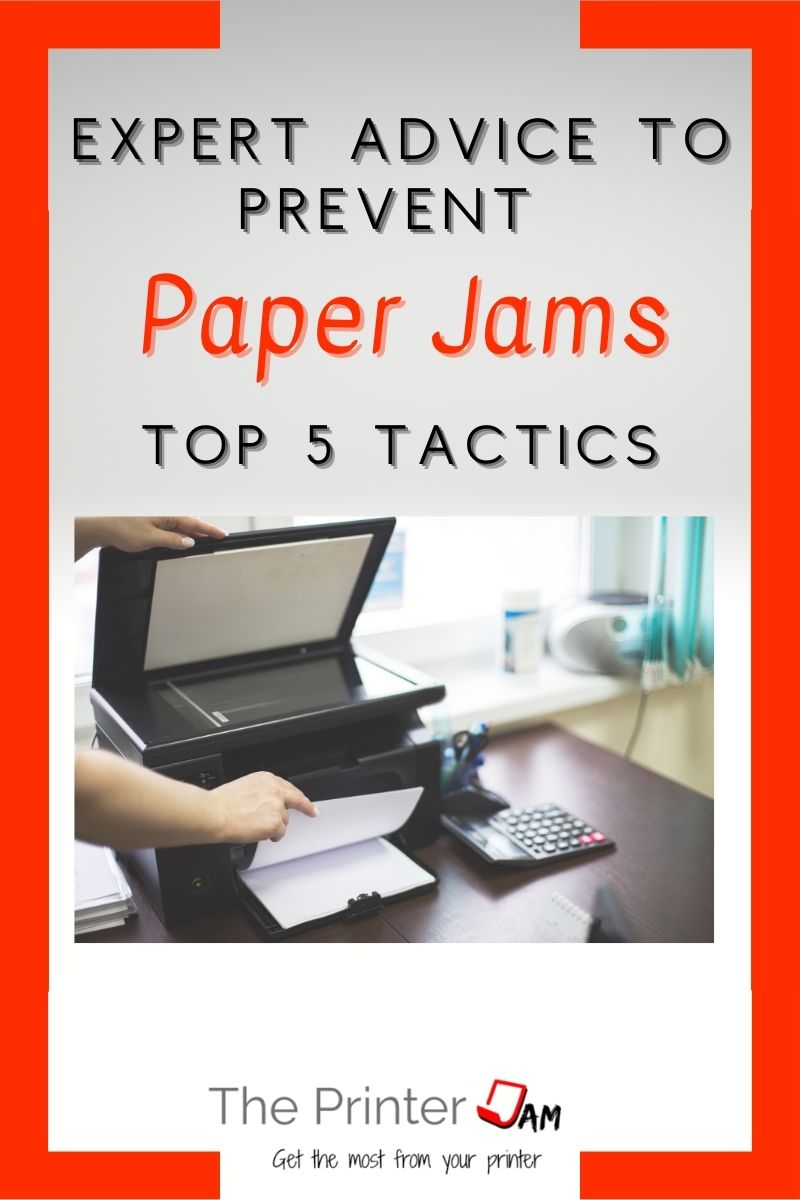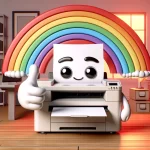
Paper jams happen to both inkjet and laser printers. They also happen at the least convenient times. The causes of paper jams vary. Any printer will have on average 1 paper jam for every 1,000 pages printed.
While printer jams can’t be 100% eliminated, there are steps you can take to prevent paper jams from happening.
I’m a printer repair technician with over 25 years experience. These are tips that I’ve seen actually work. The most common ways to prevent paper jams are as follows…
Use The Right Paper
In my experience, choosing the right paper for your printer is essential to avoiding paper jams. Pay close attention to the paper weight and type.
Each printer has specifications for the size, weight, and type of paper approved for use. If you use paper outside the printers specs then your printer will jam more often.
Also, paper trays are only suitable for specific weights or types. Heavier paper weights are usually required to use a bypass or manual feed tray.
These trays use different feed rollers designed for heavier weights. Or are single sheet feed to avoid the issue of paper separation altogether.
If your printer feeds plain paper fine but jams every time with another type of paper. Check your printer’s specs. It’s very likely the weight or type is out of spec.
Most printers are designed and produced in Japan. They only use high quality paper without any recycled content. So printers aren’t really made for cheap paper.
Cheaper paper tends to have more paper dust, recycled content, and irregularities. Many offices I go to use the least expensive paper they can find.
Which isn’t a bad thing if you don’t mind clearing an occasional paper jam. But understand cheaper paper will have more paper jams than premium paper.
Store Paper Properly
Once you’ve choose the right paper for your printer, storing it properly will prevent paper jams.
In my experience leaving an open ream of paper around in an office environment isn’t what makes paper go bad. You don’t need to treat paper like food since paper doesn’t have an expiration date.
What ruins paper is storing it in humid environments such as a garage, basement, or outside. Paper will soak up the humidity rapidly in those environments.
If your office doesn’t have the best climate control then I’d use storage containers. I recommend using them if you plan on leaving paper lay out more than a few weeks too.
In my experience humid paper is more common than static electricity build up in paper. Paper with too much static is much easier to resolve than humidity.
You should find another use for humid paper or throw it away. Paper with too much static can be corrected by fanning or tapping the stack on a hard surface. The more you handle it the less static charge it will have.
Flat Surface
Next to avoiding humidity, the kind of surface paper is stored on will prevent paper jams. It’s important to store paper on a flat surface.
Paper will acquire the shape of the surface it’s stored on. So avoid uneven or flexible surfaces to store paper.
For example, if the corner of a ream of paper dangles off the shelf it’s stored on, the paper will have too much curl. Which causes paper jams.
Unlike humidity, you can take curl out of paper. Place the paper on a flat surface with a few large books on top for 24 hours. If the paper curl is slight, flip the stack of paper over in the tray to stop paper jamming.
Fan the Paper
All the documentation with every printer will tell you to fan the paper. It may seem a trivial activity but this is a proven method for preventing paper jams.
If a tiny amount of glue from the packaging touches the paper it will cause a few sheets of paper to stick together. A miniscule defect in the blade they used at the factory to cut the paper will also cause a few sheets of paper to stick together.
All it takes is two sheets of paper to adhere to one another to cause a paper jam. While fanning the paper you won’t detect any sheets stuck together but nonetheless this task will free any stuck pages.
I’ve been in print shops that print 700,000 pages a week that swear by this method. They see an decrease in paper jams when they consistently fan the paper before loading it.
Correct Print Settings
Moving on from paper, an important factor to prevent paper jams is your printers settings. Incorrect printer settings can lead to constant paper jams.
If a printer has 8½ x 11 paper loaded but the printer thinks 4 x 6 paper is loaded. It will continuously jam until the settings are corrected.
Be sure to check the paper handling settings in your print driver. Also at the printer itself if it is equipped with such a menu.
App Settings
In apps such as MS Word the page setup will override your print driver. For example, if the page setup is set to letter landscape size this will take priority over the print driver. So even though your print driver is set correctly, the printer will jam because it has letter portrait.
I’ve seen page setup cause many issues. From constantly using the wrong tray to reducing every page to paper jams. Other apps have similar page layout or management settings.
Be sure to check your print driver, printer, and app settings for conflicts to avoid paper jams.
Clean Paper Feed Rollers
It doesn’t take much dust to on paper feed rollers to cause the to slip. Which results in a paper jam. I’ve seen new printers jam simply because a strand of hair wrapped around the feed rollers.
Clean paper feed rollers will prevent paper jams. To keep paper feed rollers clean, cover the printer when not in use.
Many inkjet printers have rear loading paper which collects dust. Front loading trays are also susceptible to dust. Paper cassettes are better but paper dust accumulates on all paper feed rollers.
Cleaning paper feed rollers isn’t as hard as it sounds. That or I’m out of touch since I’ve been doing this for over 25 years.
There are more detailed instructions. But I’ve found soapy water on a rag is the safest cleaner for paper feed rollers. Rubber rejuvenator or WD-40 has the best results.
Keeping the paper feed rollers clean prevents paper jams.
Recap
Tl;dr
Here is the list of tips to avoid paper jams:
- Choose the right paper. Cheap paper jams more. Using the specified weight and type for your printer will prevent paper jams.
- Store paper properly to avoid humidity and paper curl. Dry and flat paper has less paper jams.
- Always fan the paper before loading it. It doesn’t take much friction to cause paper jams.
- Check the print settings for conflicts. In the print driver as well as the app you’re using to print. The correct page setup or page layout settings will avert paper jams.
- Keep paper feed rollers clean by covering your printer while not in use. You can also clean them with a rag and rubber rejuvenator or soapy water. Alcohol dries them out.
These are the most common ways I’ve discovered to prevent paper jams!
FAQ
Flipping the paper over is an easy way to stop paper jams.
Also, be sue to use the right paper. Store it on a flat surface. Always fan paper before loading it. Check print settings for conflicts. Keep your printer covered when not in use.
Issues with the paper or feed rollers are the most probable causes of paper jams. Check to see if the paper is loaded properly. Folded corners, loose or tight side guides are common. Incorrect print settings are also frequent. Humidity and paper curl cause issues.
If everything else is fine, the problem lies with the paper feed rollers. Dirty or worn paper feed rollers are common causes for paper jams. Clean or replace them.
If a printer jams every time it’s likely set to the wrong paper size, the paper is not within the specs of the printer, the paper isn’t loaded properly, or there’s something inside blocking it.
Humidity can cause paper jams. It’s not very common. Paper has to be extremely humid to cause a printer to jam. Humidity is more likely to cause print quality issues than paper jams.

The Copier Guy, aka Dave. I’ve worked on scanners, printers, copiers, and faxes since 1994. When I’m not fixing them I’m writing about them. Although, I’m probably better at fixing them. I’ve worked with every major brand. As well as several types of processes. If it uses paper I’ve probably worked on one.





